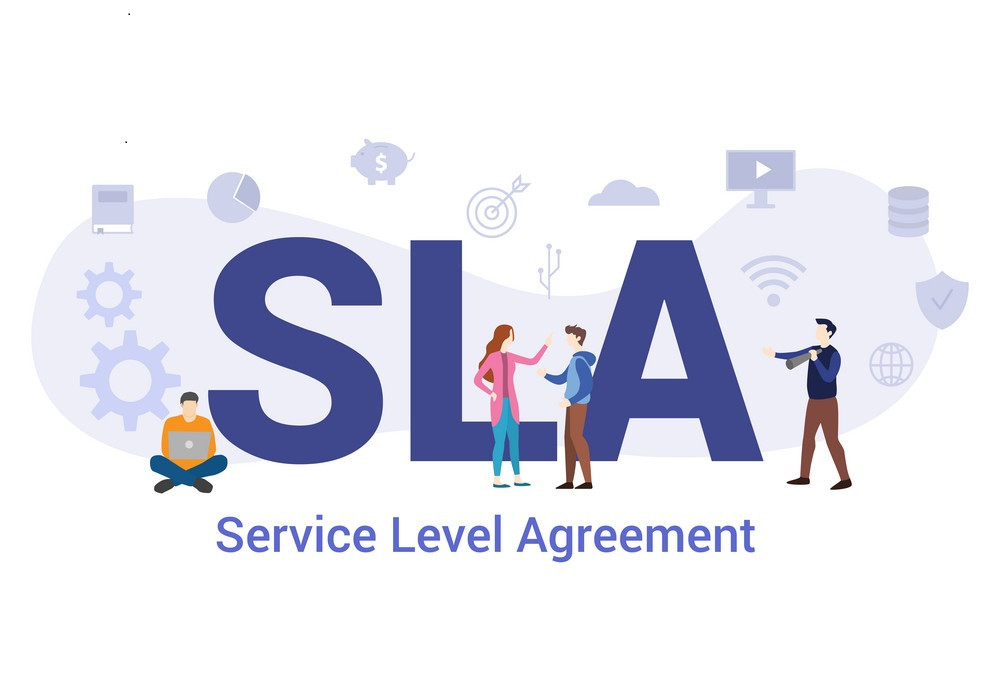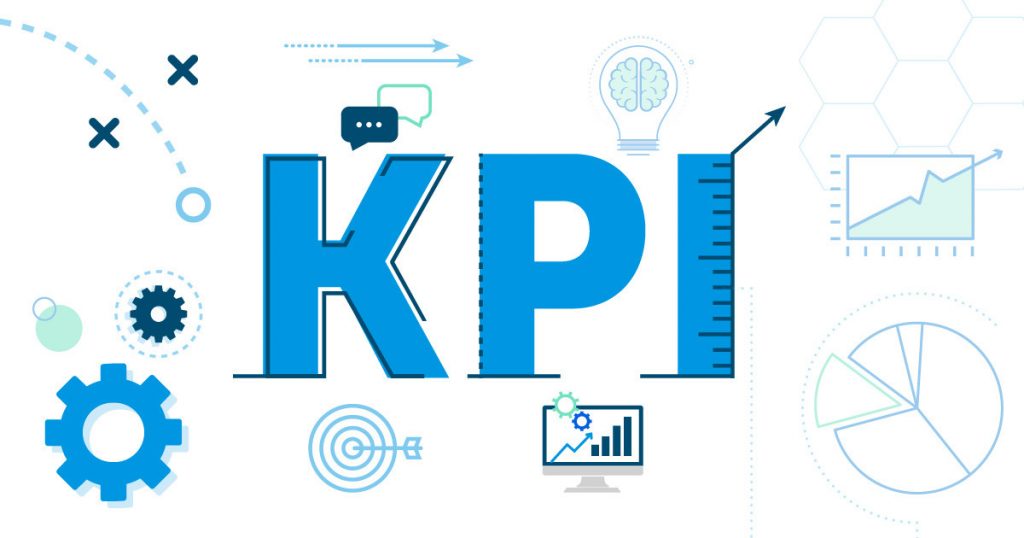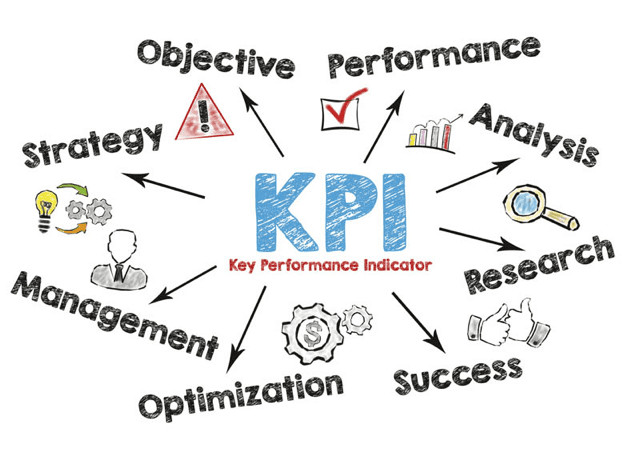What are SLAs? Businesses that want to be sustainable cannot do without SLA!
What are SLAs? Businesses that want to be sustainable cannot do without SLA!
While the concept of “KPI” has become so familiar and well understood by many people, the SLA (Service level Agreement) is a rather foreign concept, even for managers. enterprise. So what is an SLA, and how is it different from KPIs? Let’s find out with 1Office through the following article!

What is SLA (Service Level Agreement)?
First of all, SLAs and KPIs are similar in some respects, as they are both important components of business process management. Both concepts are associated with measuring and evaluating job performance.
The main difference between SLAs and KPIs that is most obvious is WHEN they are used.
I. What is SLA?
SLA stands for “Service level Agreement” which is understood as a commitment between service providers and customers.
This commitment does not stop at the aspect of “Quality”, but also includes factors such as Quantity, Availability, Supplier Responsibilities… as agreed by both parties.


What is an SLA Commitment? Why is it important to commit to an SLA?
To take a very real example, the minimum Internet speed that your carrier states in your contract is a form of SLA.
A telecommunications company’s SLA can guarantee network availability of 99.999% (calculated for about 5 minutes and 25 seconds of network outage every year). However, this time may still be too long for some businesses.
Accordingly, telecommunications companies also pledge to reduce the percentage of charges paid to customers if the above commitment is not achieved, usually based on a comparison scale based on the impact of the violations.
To some extent, SLA can be understood simply as an expectation to be achieved between the customer and the supplier. Commitment to quality assurance SLA is the only sustainable way to retain customers, create credibility and seriousness of the business.
II. Why do businesses need SLAs?
SLA has a long history of development in professional services companies around the world. These companies use SLA – Service level Agreement thoroughly as a useful tool for professional service management.
That will help improve customer satisfaction with commitments as well as the fulfillment of promises as promised, contributing to boosting sales, profits as well as capturing market share.


SLA has a long history of development in professional service companies around the world
In Vietnam, many banks and large corporations are promoting SLA commitment and see it as a culture and standard to be achieved, spreading from the top management to all levels of employees. smallest.
SLA is considered as one of the very important models for businesses today, especially if businesses want to manage well in Marketing or sales department, etc., they should apply this model.
This is also a fairly sustainable way to help businesses ensure brand development, affirm their credibility and get potential customers for themselves.


SLA is considered one of the most important models for businesses today
The commitments in the SLA will bring full information related to the service and are clearly shown in the contract, signed by representatives of the two parties, with a great degree of trust.
In particular, SLA also ensures that these commitments will be disseminated to both parties, ensuring that all terms are verified and are the same on both sides.
Any contract of value without an associated SLA (reviewed through an attorney) can easily be misinterpreted whether intentionally or unintentionally. SLA helps protect both parties in the contract, avoiding misunderstandings or conflicts when working.
III. How is SLA different from KPI and OPI?
1. Distinguishing SLA and KPI
While what an SLA is is a rather vague term, KPI is a concept that can be measured in numbers and is often used to accurately measure the progress of a particular job.


How is KPI different from SLA?
The SLA will be able to adjust for some of the following metrics:
Agreements related to the field of information technology
Receipts to ensure the quality of service
Continuous service improvement
Adjustment in the process of warehouse management
Adjust inventory reporting accuracy
Issues related to customer feedback when using the service
Adjustments to cost reduction agreements
Besides, KPI is an indicator used to measure and evaluate the performance of each employee, individual and the whole enterprise. KPI is an acronym for Key Performance Indicator – a job performance indicator.
KPIs will contribute to the success of businesses by providing continuous updates on their vital signs.


Key KPI stands for Key Performance Indicator
KPIs themselves are often used as a tool to gauge how well SLA expectations are being achieved.
Imagine if you hire a mechanic to install air conditioners for your bedroom, the KPI is whether he completes the installation before your expectations or not, sooner or later.
Cross-departmental KPIs are capable of informing the following end-to-end performance factors:
Orders accepted, processed and completed without issue (Perfect Order)
Gross profit
Inventory level
Cost of goods sold
Cost of inventory
Total logistics costs
KPIs are often based on factors that are easy to measure (time, …) and are used to gauge how effectively a person is working.
3. Distinguishing SLA and OPI
Unlike KPIs or SLAs, OPIs measure a specific function or activity – often one of the bottlenecks for your business.


Eg:
OPI (Operational Performance Indicators) for a transportation business to evaluate the process of loading goods or OPI for a restaurant will measure the process to perform the processing of meals,…
According to Purdue University’s analysis “Meter and Building Control Datas To Drive OPIs and KPIs”, OPI will adjust more detailed and specific information, towards the inner workings of the business (Inward facing).
In addition, the lines of information as well as the users of that information will be limited.
IV. Ending
To make it easy to understand, just remember: SLA (Service level Agreement) is Desire – KPI is Metric. Indeed, most KPIs are born after you have an SLA. You define your expectations, and then use KPIs to measure those expectations.
Understanding what SLA is and how it is different from KPI will help businesses have a better development orientation. Besides, there are SLA and KPI models to help you ensure the sustainable development of your brand and gain customers’ trust. You can get advice on how to build an SLA and KPI model using the tool by leaving a message at the button below.
CÁC TIN LIÊN QUAN
- (Tiếng Việt) Quản lý nhân sự xây dựng như thế nào?
- (Tiếng Việt) Kinh nghiệm lựa chọn phần mềm chấm công cho máy chấm công vân tay
- (Tiếng Việt) Giao việc là gì? Cách để ủy quyền và giao việc hiệu quả
- Ronald Jack hands over Smart Human Resource Management 4.0 solution to the Vegetarian Restaurant chain
- HOW TO BECOME A GOOD HUMAN RESOURCE ADMINISTRATIVE?
- What is IoT? Application of IoT in business and life
- AI detects shipwrecks from the air
- Students of Hanoi University of Industry study the application of ‘problems’ to detect exam cheating
- Top 7 best task management software today
- How to still have a chance to get promoted while working from home







